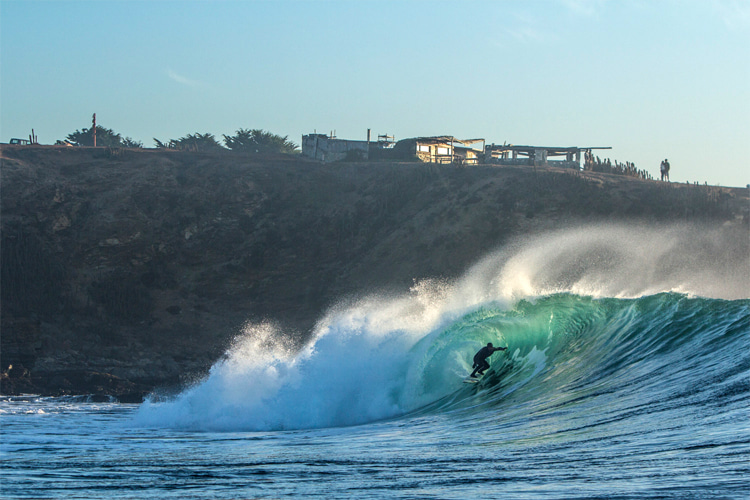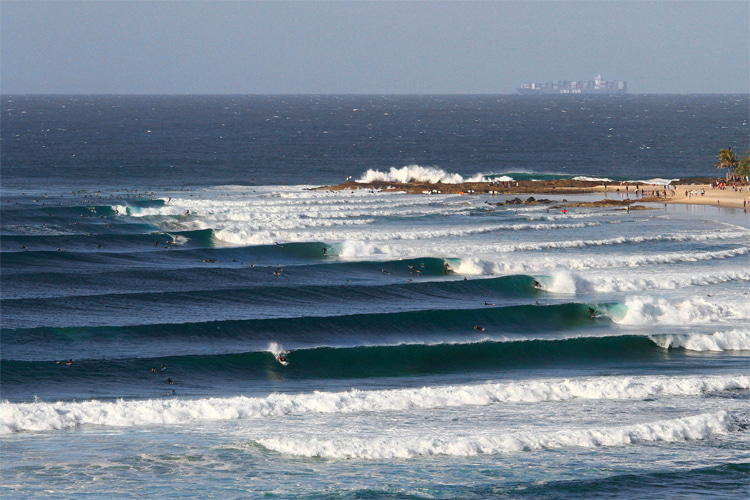What is to be done about the encroachment of coastal development and its malignant effects on surf spots from Malibu to Manly?
New research sponsored by the Centre for Blue Governance at the University of Portsmouth in the United Kingdom reports that the designation of surf spots as "wave reserves" - with dozens now spread across the world - serves as a move towards a more sustainable world.
"Wave reserves" are commonly known as World Surfing Reserves (WSR), a global initiative established by Save the Waves, a non-governmental organization (NGO).
The report, published in the scientific journal Trends in Ecology and Evolution, details the importance of wave preservation not only for surfers but the delicate environments as a system.
Grégoire Touron-Gardic, lead researcher on the project and an avid surfer, details the vital role these reserves play.
What makes these areas unique, he suggests, is that "their creation is often the result of a process led by the site's users [surfers]."
"These users are aware that the surrounding environment has to be protected in order to enjoy the waves."
The people who typically oversee their preservation - cleaning, zoning, and terms of use - are those who use them the most and have a long-term interest in their protection, namely local surfers.
This will "allow low and middle-income countries to increase their relatively weak area-based conservation systems at a lower cost, and therefore progress in achieving their international commitments such as the CBD [Convention on Biological Diversity] and the UN Sustainable Development Goals."

A Global Movement Since 1973
In addition to the obvious recreational benefits for surfers in the long term, Touron-Gardic explains that waves play an essential part in the exchange of gases and sediments necessary for productive and sustainable marine habitats.
"Wave break zones are favorable for the life cycle of many species," notes the researcher.
Unfortunately, these benefits disappear when dredging and pollution engulf local beaches, a consequence of unchecked development.
And while the idea of creating wave reserves is gaining traction, it is not new.
In 1973, it was done in Bells Beach, Torquay, Australia. A group of local surfers set out to reclaim their beaches.
They created a "wave reserve," a stretch of beach designated as separate from human influence and dedicated to promoting beachfront sustainability.
Organizations such as Surfrider and Save the Waves have carried this idea forward today.
In addition to non-profits, these reserves have captured the interest of corporations looking to both support environmental causes and bolster attention for their brands.
According to Touron-Gardic, "brands like Patagonia fund wave reserve programs around the world."
"These programs are carried out by NGOs in collaboration with the administrations in the countries."
"They are aimed at creating wave reserves, but also at strengthening local support to maintain them, as well as developing institutional capacities (and legal framework)."
Balancing Private and Public Interests
The study also notes that the private sector's involvement, especially the funding that they provide, is integral to the reserve's success on a large scale.
According to the report, "wave reserves could be set up at lower costs for the institutions than traditional nature reserves, thanks to a clear civic commitment and support from businesses around the globe."
Touron-Gardic sees the addition of corporate funds as a double-edged sword.
He is concerned that corporations will take too active a role in the reserves, ignoring local partners.
The private sector, he states, must "strengthen the capacities of local stakeholders, so that they can guarantee a sustainable activity around their waves, and so that they can benefit from this in a sustainable way," but not "create a situation of dependence."
Their funding is necessary for reserves' success, but equally so is the investment of local administrations and organizing committees.
Corporate involvement is a trade-off, as Touron-Gardic sees it, making "it possible to combine the preservation of the coastal environment, local economic prosperity, and human well-being."
And that is the beauty of wave reserves.
They may be funded by third-party groups or corporations but are cultivated and protected by the people that know them best - local surfers.
Words by Max Van Rees | Surfer and Junior at the United States Coast Guard Academy (USCGA)
